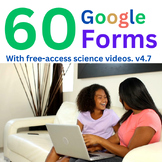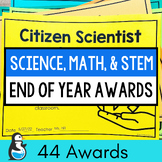171 results
Physics graphic organizer microsofts
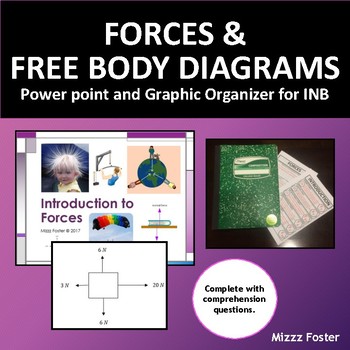
Forces Introduction with Free Body Diagram PowerPoint & Graphic Organizer
This is a powerpoint with graphic organizer foldable for interactive notebooks bundle. You can present the power point while the students copy down the notes. There are questions built into the power point and the graphic organizers to help check for student understanding.
Contact forces versus at a distance forces are explained and examples of each are given. Students learn about vectors, Newtons, and free body diagrams.
This is a two page fold out foldable which fits easily into a compositi
Subjects:
Grades:
8th - 12th, Higher Education, Adult Education
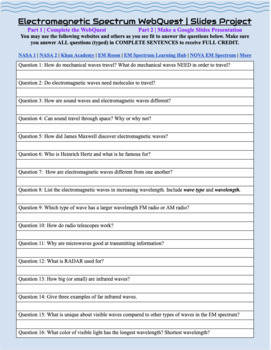
Electromagnetic Spectrum Waves WebQuest GoogleDoc | Slides Presentation
I used this WebQuest with my 8th Grade science students to review the types of Electromagnetic Waves on the Electromagnetic Spectrum. Students will also create a Google Slides presentation based on their assigned wave type. NASA sites and .org interactives make this a fun and educational review. **UPDATED LINKS 9/27/22** Websites to use are hyperlinked at the top of the Google Doc with directions. Most of the information can be found on the first few sites. More interactive sites added!! Part
Subjects:
Grades:
5th - 12th
Types:
NGSS:
MS-PS4-1
, MS-PS4-2
, MS-PS4-3

Waves Bundle: 1 PowerPoint & 2 Graphic Organizer Notes for Interactive Notebook
This Waves Bundle has a power point and two accompanying graphic organizers that easily fit into an interactive notebook or spiral notebook.
WAVE POWER POINT
The waves power point is in depth instruction over waves, Students will learn wave vocabulary, wave forms and types of waves.
Wave vocabulary covered in this power point include; wave, amplitude, wavelength, crest, trough, line of equilibrium, frequency, longitudinal wave, transverse wave, compression, rarefraction, reflection, refractio
Subjects:
Grades:
9th - 12th
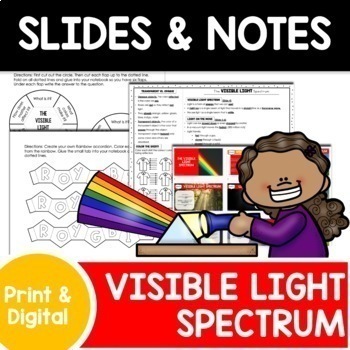
Visible Light Spectrum | Rainbows | Google Slides & Notes | INB
This interactive lesson is an introductory lesson on the Visible Light Spectrum. Students will learn introductory information on visible light and how a rainbow is created. This is a great lesson to teach before teaching on the Behavior of Light. Student will get a deeper understanding of exactly what is the Visible Light SpectrumWHATS INCLUDEDGOOGLE SLIDES (17)DIFFERENTIATED GUIDED NOTES (3 versions)DIGITAL GUIDED NOTES2 INB ACTIVITIESThis lesson is a complete lesson with google slides, differ
Grades:
4th - 6th
Also included in: Science Slides & Notes Growing Bundle
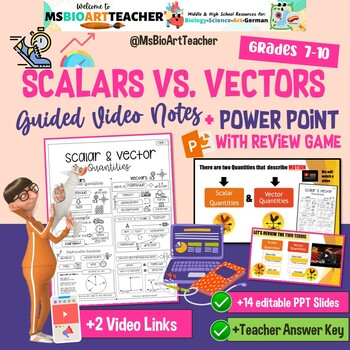
Scalar & Vector Quantities PowerPoint and Guided Video Notes
This is an introductory lesson about the difference between scalar and vector quantities.To make learning and remembering more effective, watch with students an animated video (embedded in the PPT) and students fill out the guided video note page. Then, you play a review game using the provided Power Point Presentation. How to use?Watch with students the video about scalars and vectors (link provided)Pause the video to allow students to fill out and colour the guided note pagesShow ppt slides to
Grades:
7th - 10th
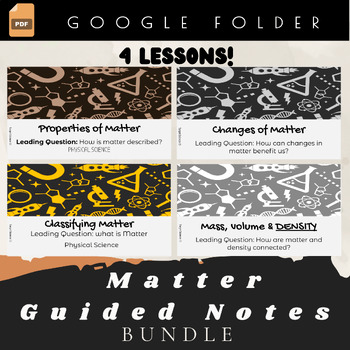
Matter Mega Bundle Slide show and Guided Notes
Mega bundle of guided notes for your matter unit! Provided in this bundle are 4 separate guided notes lessons: Classifying matter, properties of matter, changes in matter, and Density. Each lesson has an editable Google Slide show and multiple versions of guided notes. The editable slides allow you to curate the lesson to your classroom. The various note sheet versions allow all your learners to retain knowledge: blank, structured, differentiated, and fully digital guided note sheets. Check out
Subjects:
Grades:
8th - 10th
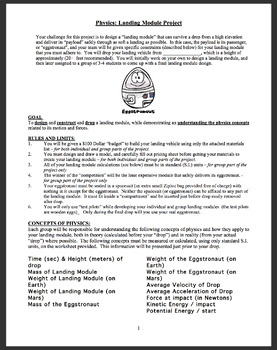
Mars Landing Module STEM Challenge (Egg Drop) - Middle or High School Physics
This is a multi-step, usually multi-week Engineering Project that I did in 8th grade physics class for many years, and it was ALWAYS super fun and a highlight of the year. It accompanies a Physics Unit on Mass, Forces, Gravity, and KE & PE Energy, and is best to incorporate project into a 4-6 week unit. It can easily be adapted for grades 6-12, varying the concepts of physics that are expected to be demonstrated.The students design a "landing module" to theoretically land on Mars, while succ
Subjects:
Grades:
7th - 10th
CCSS:
NGSS:
MS-ETS1-2
, MS-PS3-2
, MS-ETS1-1
, MS-ETS1-3
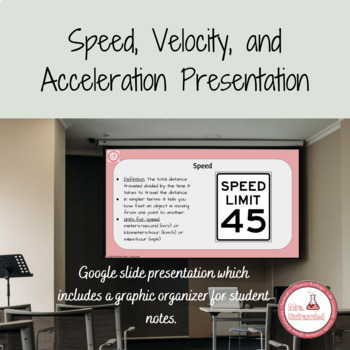
Distance Learning: Speed, Velocity, And Acceleration Google Slides and Notes Pg.
Description: In this product you will find a Google Slides presentation that covers the concepts of speed, velocity, and acceleration. Students will be taught the definition, units, formula, and be given two examples to solve for each variable. You will also find four options for students to take notes. The first two options are for students to fill out a venn diagram comparing all three concepts, available in print and digital in Google Slides. The second two options are for students to fill ou
Subjects:
Grades:
6th - 8th

Power Point: Middle school magnetism
Save time and keep students' attention with this 29 slide power point designed for middle school physical science. Covers the basics of magnetism, electromagnets, applications, generators, motors and more. Graphics help concepts stick and embedded links to interactives will involve students and engage higher level thinking skills. Includes questions for review, writing prompts, 2 graphic organizers and links to 5 review games and 2 quizzes. Part of the Physical science bundle
Check out othe
Subjects:
Grades:
6th - 9th
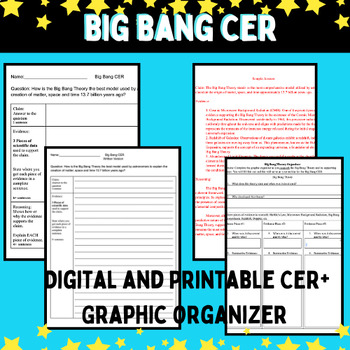
Big Bang CER
Why is the Big Bang model the best theory to describe the beginning of this universe?Students will use a big bang graphic organizer to research and describe three pieces of evidence that supports the big bang theory. During the graphic organizer, students have the opportunity to describe what they have learned in class (specifically), and how it supports their research. After students will write a complete CER on the Big Bang Theory. What will you get with this product? -Electronic CER-Printable
Subjects:
Grades:
8th - 11th
NGSS:
HS-ESS1-3
, HS-ESS1-2
Also included in: CER Physics Bundle

Structure of Atoms Slides & Guided notes- paper and digital
33 editable slides packed with information about the structure of atoms paired with 4 versions of guided notes.Each guided note sheet is double sided. The first version of the slides is completely blank allowing studnets to practice taking effective notes. The second has a little more structure to keep studnets on track. The third is a fully differentiated guided note sheet that has students fill in the blanks. This version centers on having students follow the slides while writing the key vocab
Subjects:
Grades:
8th - 12th

Race Car Project and Kinetic Derby
Race Car Project and Kinetic DerbyPut your students in the driver's seat for two weeks and watch their engagement soar! This 8-day experimental design project has students complete the following tasks:Research: Find out about kinetic and potential energy!Brainstorm: Generate ideas to test out KE and PE within the race car theme.Diagram: Plan out their race car build using a list of available materialsBuild: Construct their race car.Design: Come up with their experimental procedure as a group.Ass
Subjects:
Grades:
6th - 10th
NGSS:
MS-PS3-4
, MS-PS3-2
, MS-PS3-5
, MS-PS3-1

Waves of Energy: Comparing Tsunami and Earthquake Waves Webquest
NGSS aligned web activity, students learn more about the physics of seismic and tsunami waves in order to make observations on how these compare to each other and wind driven ocean waves. How does the medium affect the frequency, amplitude and velocity? How does energy travel through these waves?Hyperlinks are provided on the three wave topics (wind, seismic and seismic tsunami waves) for students to conduct independent research in order to complete the comparison chart. Multiple resources pr
Subjects:
Grades:
8th - 12th
NGSS:
HS-PS4-1

Light Unit Labs, Guided Readings, Graphic Organizers and Teacher Notes
Here is a complete unit on light perfect for your chemistry, physics, or astronomy unit for Middle School SciencePRODUCT CONTAINSLabsGuided ReadingTeacher notesGraphic organizersMATERIALSClear Plastic cupClear square containerWater in a pitcher1 Compact disc such as a music CD1 Piece of white copy paperCamera or colored pencils or crayonsPencil1 clear drinking glass (try one made of clear glass first)WaterMilkSpoonEyedropperBright flashlightAny handheld remote controls from around the house (TV
Subjects:
Grades:
7th - 9th
NGSS:
MS-PS4-2
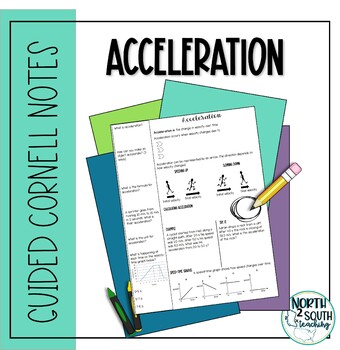
Acceleration - Cornell Doodle Notes
This set of guided notes on acceleration will have students reviewing their class notes before test day! The Google Slides coordinate with the scaffolded Cornell notes, are no prep and easy to implement while the question and summary sections remove the need to copy an extra worksheet! Use the Cornell method to boost student understanding and retention with the simplicity of scaffolded notes!The center of the page includes notes and visuals to boost comprehension of key information. Students wil
Subjects:
Grades:
5th - 8th

Nuclear chemistry
Use this graphic organizer to summarize the most important takeaways from Nuclear Chemistry - fission vs. fusion; alpha, beta & gamma decay; history and medical uses of nuclear chemistry. Use the practice problems attached along with to practice decay equations.
Subjects:
Grades:
8th - 12th, Higher Education, Adult Education
NGSS:
HS-PS1-8
Also included in: Nuclear Chemistry
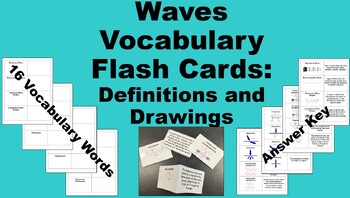
Waves Vocabulary 16 Flash Cards: Write Definitions, Draw Examples, Answer Key
This resource is 16 Waves Vocabulary Flash Cards. Through this resource students will: (1) Research the definitions of 16 Waves Vocabulary Words, (2) Determine and Draw picture examples of each Waves Vocabulary Word, and (3) Cut out and Assemble their Waves Vocabulary Flash Cards.This resource is 10 Pages. Pages 1-4: Student Handout for Waves Vocabulary Flash Cards. These are the pages students will fill out and cut out to make the Flash Cards. Pages 5-8: Answer Key for Waves Vocabulary F
Subjects:
Grades:
6th - 12th
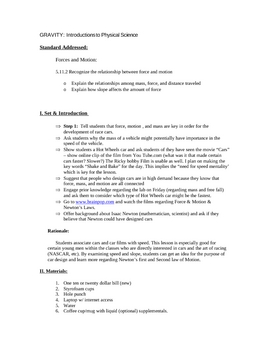
Fun Intro. to Physical Science Lesson Plan w Lab Worksheet
This is a thoroughly written formal lesson plan on how to introduce the principles of Physical Science and the work of Newton. This includes a step-by-step lab experiment and fun worksheet for individual or group work. Also, as a bonus, it includes a link to short stories for writing about Newton's work.
Subjects:
Grades:
2nd - 10th

Nuclear Reactor
This is an interactive downloadable to help students understand the parts of a nuclear reactor while understanding the flow and type of energy at each step. You can use this worksheet to explain the conversion of energy from chemical to thermal to mechanical to finally electrical energy.
Subjects:
Grades:
8th - 12th, Higher Education, Adult Education
NGSS:
HS-PS1-8
Also included in: Nuclear Chemistry
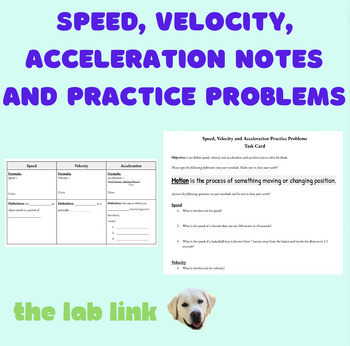
Speed, Velocity, Acceleration Notes + Practice Problems + Answer Key
These notes and practice problems are designed to introduce speed, velocity and acceleration. I use them at the beginning of my Forces and Motion unit and go over the notes prior to the practice problems. If you enjoyed this lesson, please check out my other activities related to Force and Motion. Speed, Velocity and Acceleration Card Sort - Freebie!Wind Up Toy Lab for Calculating Speed, Velocity and AccelerationComparing Distance and Speed versus Time Graphs Card SortFriction Inquiry LabNewton
Subjects:
Grades:
6th - 8th
Also included in: Middle School Force and Motion Worksheet + Lab Bundle
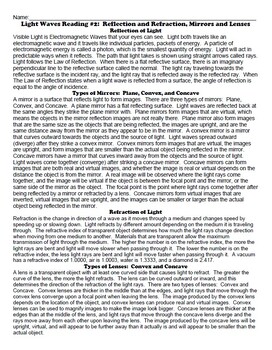
Light Waves Reading #2: Reflection and Refraction, Mirrors and Lenses
This resource is a Read, Think, and Draw of Light Waves Reading #2: Reflection and Refraction, Mirrors and Lenses. Through the reading students will learn about: Electromagnetic Waves, Visible Light, Photons, Light Rays, Light Rays Travel In Straight Lines Until Interacting with Matter, Law of Reflection, Real Images (Formed When Light Rays Converge, Concave Mirror, Convex Lens) , Virtual Images (Formed When Light Rays Diverge, Plane Mirror, Convex Mirror, Concave Lens), Types of Mirrors (Plane,
Subjects:
Grades:
6th - 12th
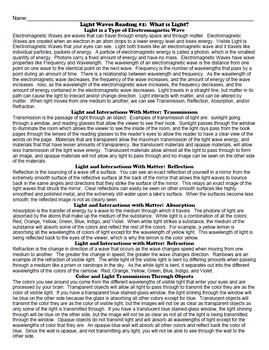
Light Waves Reading #1: What Is Light- Read, Think, and Draw
This resource is a Read, Think, and Draw of Light Waves Reading #1: What is Light?. Through the reading students will learn about: Electromagnetic Waves, Visible Light, Photons, Wavelength, Frequency, Interactions of Light With Matter, Wave Energy, Transmission of Light (Transparent, Translucent, Opaque), Reflection of Light, Absorption of Light, Refraction of Light, and Color and Light Transmission through Objects.Teacher DirectionsPage 1 and 2 should be printed off front to back and given to
Subjects:
Grades:
6th - 12th

Electromagnetic Waves Reading #2: Electromagnetic Spectrum
This resource is a Read, Think, and Draw of Electromagnetic Waves Reading #2: Electromagnetic Spectrum. Through the reading students will learn about: What are Electromagnetic Waves, How Do Electromagnetic Waves form, Properties of Electromagnetic Waves (Transverse Wave Shapes, Crests, Troughs, Wavelength, Frequency, Wave Speed), Relationship between Wave Frequency and Energy, The Electromagnetic Spectrum (Radio Waves, Microwaves, Infrared Waves, Visible Light, Ultraviolet Waves, X-Rays, and Gam
Subjects:
Grades:
6th - 12th
Also included in: Electromagnetic Waves Bundle: Power Point, 2 Readings, Crossword Puzzle

Electromagnetic Waves Reading #1: Waves, Energy, Frequency, Wavelength
This resource is a Read, Think, and Draw of Electromagnetic Waves Reading #1: Electromagnetic Waves. Through the reading students will learn about: What are Electromagnetic Waves, How Do Electromagnetic Waves form, Properties of Electromagnetic Waves (Transverse Wave Shapes, Crests, Troughs, Wavelength, Frequency, Wave Speed), Relationship between Wave Frequency and Energy, and How Electromagnetic Waves are Emitted (Vibrating Electrons, Electromagnetic Spectrum).Teacher DirectionsPage 1 and 2 sh
Subjects:
Grades:
6th - 12th
Also included in: Electromagnetic Waves Bundle: Power Point, 2 Readings, Crossword Puzzle
Showing 1-24 of 171 results

